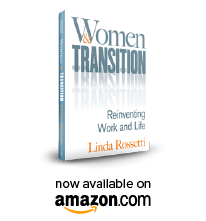By this time – many years into solid research on transitioning – one might imagine that I’ve learned all there is to know about the topic. I was reminded after my recent trip to San Francisco of how untrue this line of thinking really is. I am happy to report that I returned from California dry-eyed and excited. For those who missed Remarkable Choices, I spent three-weeks in San Francisco this summer on a writing vacation. My goal was to work unimpeded on my second book. I am happy to report that by the time I checked in for my return flight, I had an entire manuscript drafted, from introduction to final chapter.
That said, the new manuscript isn’t the entire story. The trip yielded something even more special, a broader perspective on my work. This expansion starts in a place with which we are all familiar, a decision to leave.

Early Morning View
We leave all sorts of things. We leave in big and small ways. We leave family gatherings and political rallies and baseball games. We leave marriages and employers and friendships. We leave one opportunity for another more promising one. We leave anger and guilt and self-doubt for hope.
When do we leave ourselves?

Another Cafe, Pine St, San Francisco, CA
What a question, right?
San Francisco brought this question to light for me.
An Approach
Those who know me personally know that I am a process wonk. Therefore it shouldn’t surprise anyone that process was on my mind as I readied myself for the trip. Ok, it wasn’t until I was on the airplane heading west that I created a plan. But it was an important step.
Would I follow the same writing process I used with my first book? Or try something new? In the intervening years since my first book was published, a friend gave me a great book that talked about a radically different approach to story development than the one I had used earlier. I toyed with adopting it but I was hesitant. The last thing I wanted to do was waste my time fooling around with something that would be unproductive. But what about taking a creative risk? What might be possible under that scenario?
I settled on the unproven new approach. The process had three basic steps: to create a one page description of the book’s theme; to develop a detailed chapter outline; and then, and only then, to write chapters.
In spite of my hesitation, the new process proved to be surprisingly useful.

Chinatown, San Francisco, CA
A Broader View of My Work
After nearly seven years writing, advocating and teaching about transition, it was very humbling to sit down and attempt to articulate a one page theme. I spent days on this. I edited and re-edited. I walked the hills of San Francisco when I got stuck. I started to get concerned that it was taking too much time. How would I make progress if I spent all my time on the earliest step? Here is what emerged from my inelegant labors:
My work is about choice or the difficulty many of us have – including me – in making significant choices or major life decisions. I was – after all – introduced to transition thanks to a personal calamity that left me struggling with a choice of what to do next.
By focusing on choice, I realized that transition is not an end in-and-of itself. Transition is a process that enables growth. Our own growth. Nothing requires us to transition. It is a choice we make. We choose to grow.
We encounter many many invitations for growth over the course of our lives. Oddly, we ignore most of them. In fact, we live in a growth-phobic society. Our social norms teach us to look the other way, tamp down or create distractions when faced with an opportunity to grow. These norms leave us busy – sometimes exhausted – but no further from a growth perspective.
Once we recognize the opportunity for growth and the capacity for growth that transition offers, we learn that the secret sauce lies in ‘how we respond’ to all of this. Our progress forward relies heavily on our ability to rewire our response to a transition’s trigger or the barriers and emotions that accompany them.
Triggers or the circumstances that lead us to choose growth vary widely. Divorce, death, job loss, marriage, the birth of another child, gender re-assignment surgery or a recognition that something isn’t quite right. Transition doesn’t concern itself with differences among triggers. The common denominator in all of this is a shift, a shift in what holds value and meaning to us. The shift occurs when we re-examine our assumptions about who we are and how we make meaning in the world.
On a practical level growth is simple: we need to turn up the volume on those things that hold value and meaning to us. These things can be anything on the planet as long as they engage us at the core. By giving voice to these things that matter to us, we allow ourselves to see the path forward in an entirely new way. With this as a ballast, all of a sudden options that were hidden from us come into full view.
What About Leaving and Leading?
When most of us think about transition, we think it involves leaving something. Leaving a professional identity or a marriage or a dysfunctional familial relationship. San Francisco taught me that this departure thinking is incorrect.
Transition and growth are about leading with who we are….ourselves…in all the circumstances of our lives. Not just at work. Not only on the playground or in the kitchen or with a sibling or a dear friend. Leading with you. Your beliefs. Everywhere. Even if this involves a struggle to recalibrate who we are thanks to a previously unrecognized departure from ourselves.
This type of leading may involve leaving but it doesn’t have too.
I remember one very funny exchange I had with the CEO of a women’s fashion house that asked me to talk at their annual meeting. “Will they all leave?’ asked the CEO in a concerned tone when he learned that the my topic would be transition. I replied, “If I do my job correctly, they will bring more of who they are to the job. The exact opposite of leaving.”
If we decouple leading with leaving, transition and growth become universally available. Through this lens, transition cannot get waylaid by the mortgage or a un-supportive boss or an overbearing family.
We get to decide how we show up every day. You don’t need to leave to lead in this way.
The converse isn’t as kind. You can leave – repeatedly – and never make a dent in transition nor growth. You will miss all of the benefits of transition and growth if you leave something but do not use your departure as an opportunity to bring up the volume on those things that hold value or meaning to you.
Leaving is often hard. Imagine if it yields nothing related to our own growth….

Leading Forward
Transition has allowed me to grow in ways I never imagined. I now operate with a connectedness to who I am that I never knew was missing and yet I can honestly say that it completes me like nothing else ever has. It is an awakening that makes me feel as if I am breathing from every pore on my body. Energetic. Joyful. Free.
May you see opportunities to add who you are to every moment that you are alive. May you respond to the invitation for growth with an open heart and begin a remarkable journey whose destination while unknown is irreplaceable. May you realize that you can have all these things by simply leading with who you are. Today.
**************************************************************************
Want to talk ‘live’ about transition and growth? There are two ways you can join me for informal chats. For those in and around Boston, join me at a free drop-in series In Transition at the Winchester Public Library on the second Thursday of every month from 7-8:30 pm. Free coffee and refreshments are served. Our kick off for this season is Thursday, September 11th! Hope to see you there.
For those unable to join in person, watch for my inaugural podcast, Destination Unknown, starting this fall. Will you join me to talk about your transition? I am scheduling guests now for twelve-minute appearances. Email me if you are interested. I’d love to add your voice to our conversation. linda@womenandtransition.com.
***************************************************************************
Copyright © 2018 Linda Rossetti & NovoFemina.com. All rights reserved. No content on this site may be reused in any fashion without written permission from NovoFemina.com.




I love this concept about leading with who we are rather than leaving something! It is a positive and transformational way of looking at transition! Great things were accomplished in San Francisco!!! Congratulations!!
Cathleen, Thank you for the feedback. I also love this notion of leading with who we are. We can all do a lot with it. Linda R.
Thank you again Linda for your always insightful writing. This article helped me to re-focus on transitions as something in me emerging and longing to be expressed (moving toward something, a way of being) vs. transitions as leaving (moving away from something). Although the transitions in my life have often required a decision to leave something, so much of our feelings and experience of transition are connected to our mindset and perspective.
Hi there. This post has given words to my own experience that I hadn’t quite yet put together in my brain until just now. Yes you can repeatedly leave situations but not make a dent in your growth. Wow. I am in my 3rd career transition. I aborted the first one due to fear; I never fully used the opportunity presented by the 2nd one due to fear; and now in my third one am just beginning to put this all together and am learning to push past the fear. This post helps by your emphasis on internal values and bringing your true values to every situation. I know my values; now I need to be brave and let them lead me. Thank you.
Margaret, Thank you for taking the time to share your perspective. To a brave 2019! Linda R.